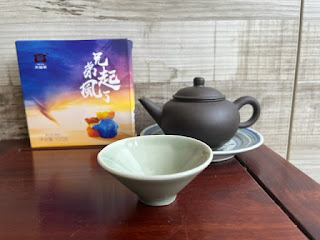I had written about tea for many years and I had not had a 'tea of the year' entry since I started. It would be fun to end this year with such a post.
The tea, in my opinion, has to be good; have some age and for its price levels not break an arm and a leg to acquire such a tea. These are simple parameters. Finding such a tea from an obscure tea factory would be an extra bonus as well.
I present to you the tea; 2005 Shuang Xiong raw pu erh cake.
This is a Yongde Shuang Xiong tea factory production. I could not find much information on the internet about this factory and it is possible that this factory had closed its operations. Yongde region is now well known for its pu erh tea harvested from nearby Bing Dao and Da Shue San (big snow mountain). These tea regions were not well known 20 years ago but now these pu erh tea are now commanding high prices in the Chinese tea markets.
This tea brews strong. The color of the tea and tea leaves when brewed was dark rusty amber. Initial aroma was like being in an old book or antique shop. The woody aroma and taste was like a whisky or wine that had the oaky aftertaste. The tea is smooth and rounded. Mouthwatering and having a salivating sensation in the aftertaste. The almost 20 years of clean Malaysia storage was good. There is good mellowness and roundness in the tea. A strong complex tea and yet there is a soft and gentle side to the tea. Whenever I brew this tea, the tea session is short; finishing 6-8 infusions within a short time. Addictive.










































